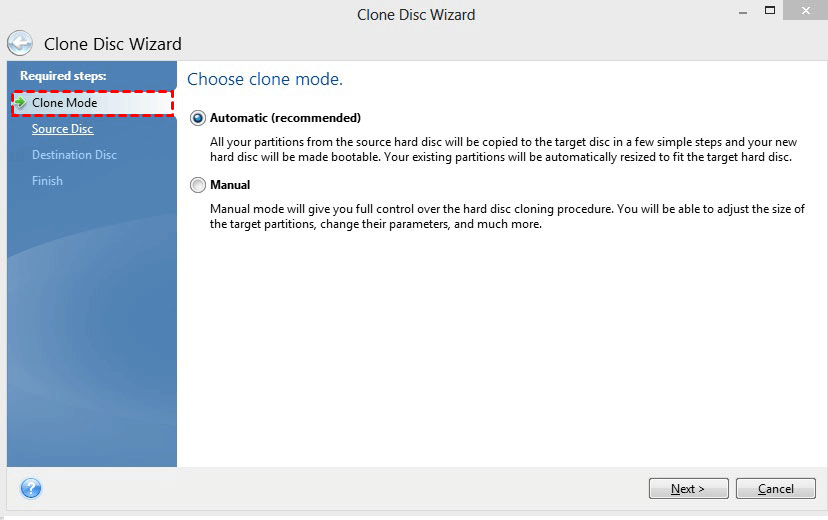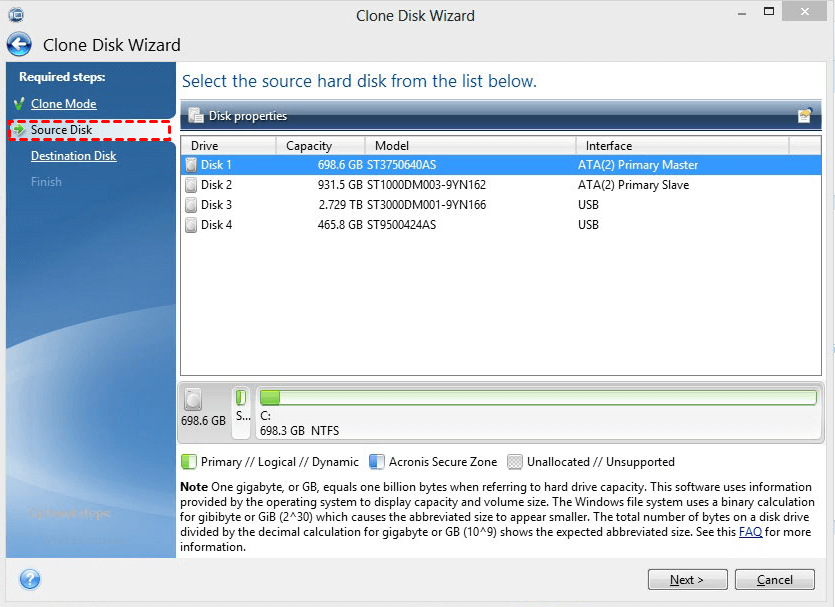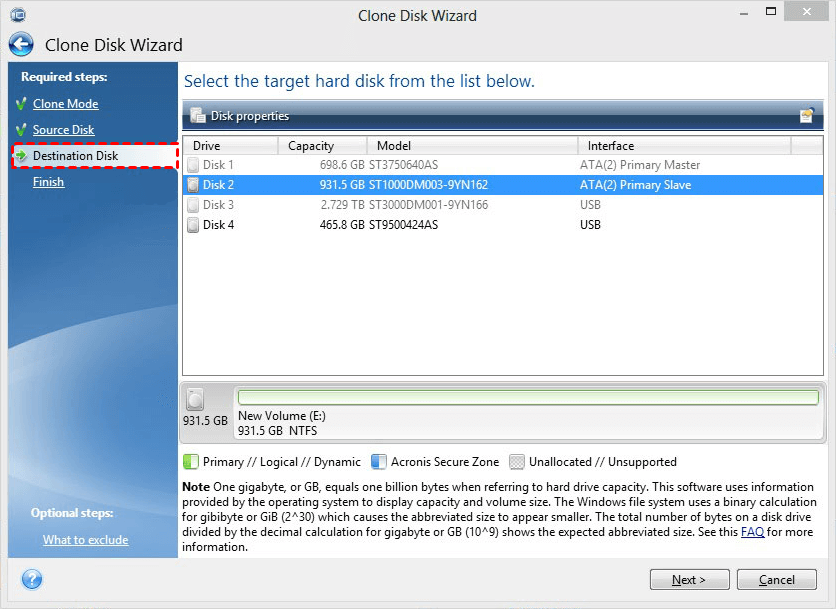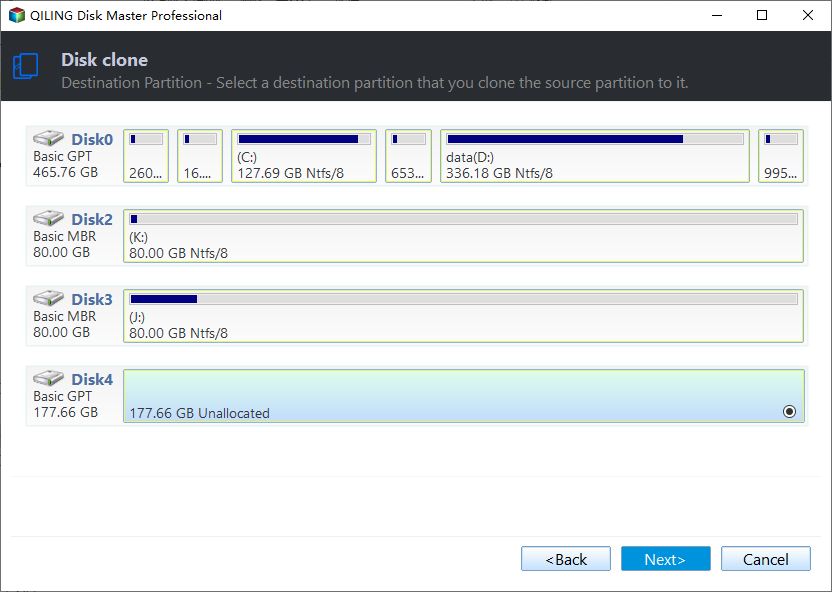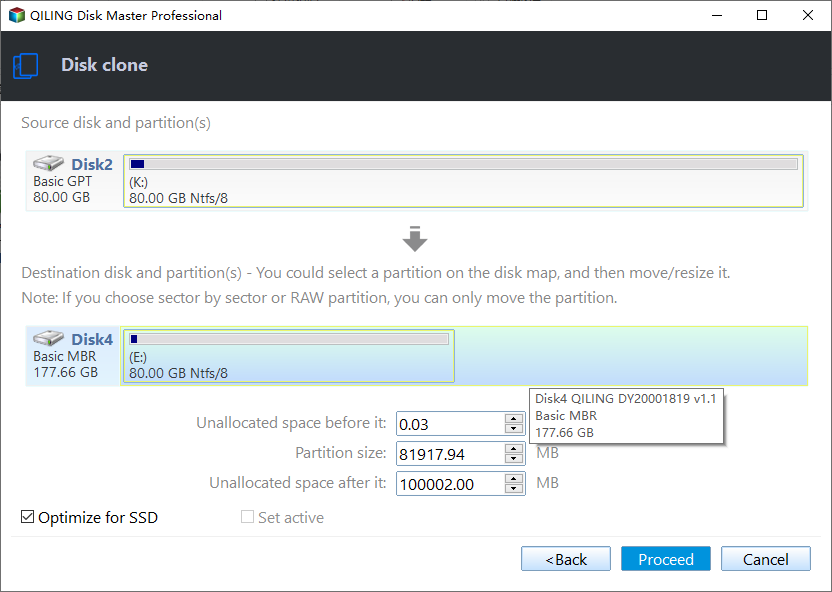Seagate Disk Clone Software: Clone HDD to Seagate SSD
Quick navigation:
- Why clone Seagate HDD to SSD?
- Does Seagate SSD come with cloning software?
- Use Seagate DiscWizard clone disk to SSD
- Use Qiling Disk Master Professional to Clone HDD to Seagate SSD
- Summary
Why clone Seagate HDD to SSD?
Owing to many advantages, especially peak performance, so many users are willing to clone a hard drive to SSD, for example, clone HDD to Seagate SSD, and SSDs are widely used in the military, IT industry, aviation etc. To get more differences between HDDs and SSDs, check the quick browse table below.
In sum, HDDs are famous for its big capacity and low price while SSDs are known as its high performance. In addition, thanks to the solid state design, without any removable mechanical parts internally, SSDs are more durable, and can bear higher extremes of shock, drop, temperature, as well as has a lower risk of data loss.
Does Seagate SSD come with cloning software?
like other disk vendors, Seagate SSD also comes with an integrated disk cloning software, named Seagate DiscWizard, which can help you clone entire hard drive to Seagate SSD in Windows XP/7/8/8.1/10/11. Thus, you don't need to reinstall Windows and installed programs when you want to replace or upgrade an old hard drive.
Well then, you may wander how to clone HDD to Seagate SSD step by step? Please continue to see below.
Use Seagate DiscWizard clone disk to SSD
Here you will use Seagate DiscWizard to clone disk to SSD. It suggests you to clone from the DiscWizard boot CD, but you still perform the cloning process within Windows. Please directly connect both hard drives to SATA / PATA motherboard if your computer is a desktop or has extra slot.
In addition, you still need to make other preparations before cloning Seagate HDD to SSD.
- Put a diet on Seagate HDD. You can delete large files like documents, audios, videos, clean up temperary files or useless system files via "Disk Cleanup", uninstall programs not in use.
- Partition SSD if it is not. New disks either HDD or SSD can only be used after partitioning. So, please format it before you use it to clone hard disk to Seagate SSD.
- Prepare a SATA-to-USB adapter if your computer is a laptop. Most laptops only have one drive bay, so you need to connect SSD externally via SATA-to-USB adapter.
Step 1. Start the integrated Seagate DiscWizard from the Seagate SSD and click Clone Disk under the Tools tab.
Step 2. Tick Automatic (recommended) clone mode so it will automatically fit the new SSD. Then, click Next.
Step 3. Select old HDD as the source disk and click Next.
Step 4. Select Seagate SSD as destination disk and click Next. Click "OK" to confirm the deletion when prompted.
Step 5. Finally, preview the operation summary and click "Proceed".
That's the entire process of clone hard drive to Seagate SSD using Seagate DiscWizard, and you will get an exact copy of the original disk if everything goes smoothly. But if you don't have enough budget to get a big SSD, you can choose to clone HDD to Seagate SSHD. This kind of disk combines the advantages of both HDDs and SSDs, namely, large capacity and excellent performance.
Sometimes, you may find that the Seagate DiscWizard clone not working, mainly for 3 reasons.
- It only clone Seagate and Maxtor hard drives. Thus, if you use it to clone other brands of disk or SSD, the cloning process may fail.
- It does not support cloning a single partition, whether system or data partition.
- It does not clone dynamic disk as well.
If you are in these situations, you can turn to a reliable disk cloning software Qiling Disk Master Professional. It can make up for these shortcomings and help you clone HDD to Seagate SSD successfully in simple steps. Check details in the next part.
Use Qiling Disk Master Professional to Clone HDD to Seagate SSD
Before starting, let's get some basic of the clone software - Qiling Disk Master Professional. It works well in cloning all branded disk, including Seagate, WD, Samsung, Dell etc, whether SATA, PCIe, M.2 or NVMe. Windows 7/8/8.1/10/11/XP/Vista are supported.
And it still supports other useful features:
- Intelligent Clone: This feature only clones used sectors of a hard drive to another one and ensures secure boot as well, especially useful when you want to clone large HDD to smaller SSD.
- Sector by Sector Clone: This feature allows you to clone all sectors of a disk including hidden system partition. And it requires the destination is equal to or larger than source disk.
- SSD Alignment: This feature is to further improve reading and writting speed of SSD disk.
Clone hard drive to Seagate SSD step by step
Before cloning Seagate hard drive, you need to prepare according to the above preparations and connect the SSD through the SATA-USB adapter. Then, free download and install SSD cloning software - Qiling Disk Master Professional on your computer.
Step 1. Launch Qiling Disk Master Professional, click Clone and Disk Clone in order.
Note: The Professional edition supports cloning data disk and system disk, whether it's a MBR or GPT disk. If it is a system disk, the cloned disk will remain bootable.
Step 2. Select the old HDD as your Source Disk, then click Next.
Step 3. Select the Seagate SSD as your Destination Disk, then click Next. Then, you will be told that the target disk will be overwritten during the cloning process, so please backup your important files first.
Step 4. On the Operating Summary window, check the information of both disks. Then, tick SSD Alignment to accelerate speed and click Proceed to clone hard drive to Seagate SSD.
Notes:
◉ Don't check Sector by Sector Clone if the Seagate SSD is smaller.
◉ To adjust the partition size of target disk, you need to use Edit Partitions. It has three options, including "Copy without resizing partitions", "Add unused space to all partitions", "Manually adjust partition size". If your source disk and destination disk has different partition style, you may also see the option - Convert the destination disk from MBR to GPT or vice versa.
◉ If you want to migrate OS to smaller SSD, you need to use System Clone or Partition Clone.
Summary
It’s not surprising that many users want to clone Seagate HDD to SSD, because SSDs have better performance. Your computer can go smoothly even if you run multiple tasks simultaneously.
If your new SSD is Seagate, you can use the integrated disk cloning software, it's Seagate DiscWizard. But it's limited to clone basic disk, not including dynamic disk, system partition and single data volume. If you happen to be in these situations, Qiling Disk Master is a better choice.
It allows you to clone all brands of the disk, either larger drive or smaller drive, and specific partition(s), boost performance of SSD disk, etc. And you can enjoy more features in its professional version, such as, clone GPT disk to MBR SSD without converting partition style, clone dynamic disk, resize partition size during the cloning process, etc. For IT technician, you can use its technician to protect unlimited PCs.
Related Articles
- Solved: Seagate DiscWizard Not Cloning [4 Simple Steps]
- Solved: Seagate Discwizard Does Not Detect Drive
- Quickly Create Seagate DiscWizard Image Backup with Simple Steps
- Tutorials: Clone Hard Drive to Samsung SSD (Secure Boot) in Windows

